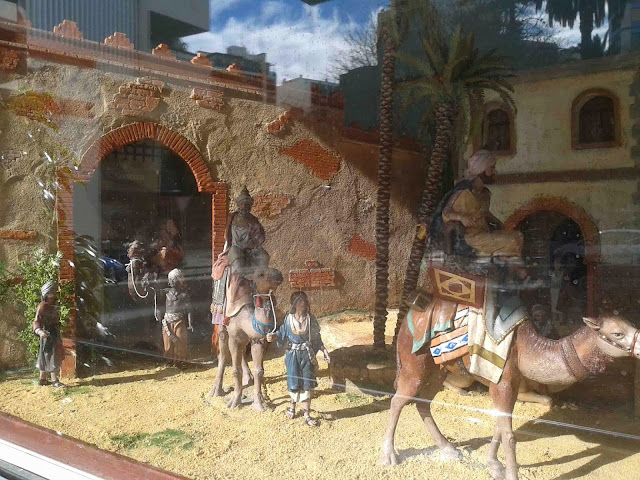Belén
What they do put up all over Spain in public spaces, churches and in some homes is a Belén, which is a scene of Bethlehem.
 |
| Bethlehem scene in the church of Cúllar, Granada |
Here are
some photos of a Bethlehem scene put together in the church of the village in Granada where I spent Christmas this year.
I think it’s really cute and they have gone into a lot of detail.
 |
| This is the Holy family which is why they have golden halos over their heads... Jesus is a few years old here. |
Children usually get involved in the decorating of their Belén or Nacimiento in the preparations of Christmas time. The models can be bought ready made and painted or plaster of Paris moulds of the figures can be painted at home. You can find most elements in craft shops, and then you just get creative.
Nacimiento
The part of
the Belén consisting of the stable with the baby Jesús, Mary and Joseph is called
the Nacimiento (birth) or the Milagro (miracle). If at home they don't put an elaborate Belén, they at least construct a Nativity scene to respect the festivity.
Here is the Nativity scene in the same Belén as in the photos above. You will note that the baby Jesus is not in the crib - this is because I took these photos before Christmas Day, i.e. before Jesus had been born.
Belén in Alicante
In the Plaza de la Montañeta in Alicante, they make a hut with a Belén inside divided into 4 specific scenes - like the Birth of Jesus and Three Wise Men following the star. (As the hut is outside and the models are in a glass case there is a lot of reflection in the photos. Sorry. I hope you can still see the models.)
How do you decorate your home or town at Christmas?















































